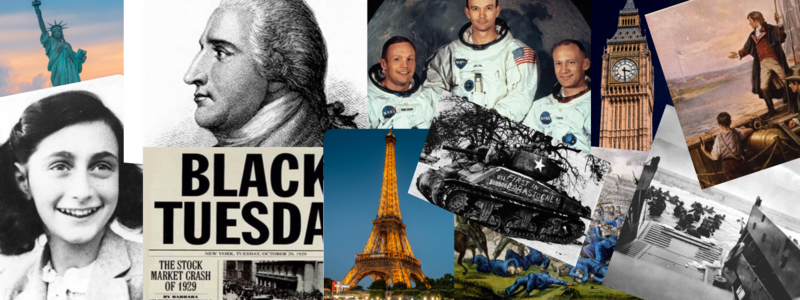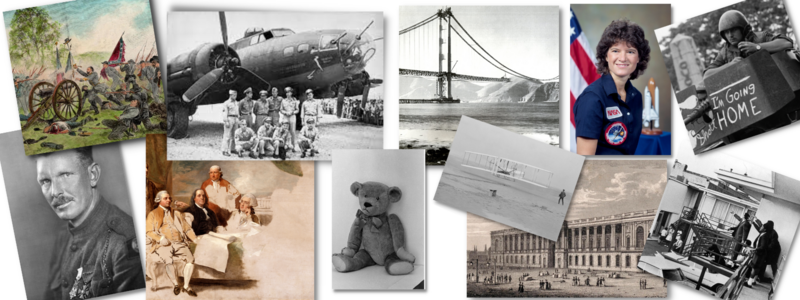Q & A with Sam Forman, author of the new young adult historical novel “Twenty-One Heroes”
A year ago when Sam Forman, author of the recently-published historical novel for young adults, Twenty-One Heroes, told me what he was working on, I thought he was joking. He quickly disabused me of that notion. Sam is one of three authors and historians who helped launch History Camp. I knew him as the author of the definitive biography of Revolutionary War hero Dr. Joseph Warren, and he’s received much praise for his work of historical fiction for young adults, including from noted author Nathaniel Philbrick in December:
If you’re looking for a book for young readers this holiday season that brings America’s Revolutionary history to life, check out my friend Sam Forman’s Twenty-One Heroes. Sam’s biography of Dr. Joseph Warren was a big help to me when I was researching Bunker Hill.
A few signed copies of both of Sam’s books are available now: Twenty-One Heroes and Dr. Joseph Warren: The Boston Tea Party, Bunker Hill, and the Birth of American Liberty.)
This interview with Sam provides an insight into his novel for young adults.
As an author, you are best known for writing the definitive biography of founding father Joseph Warren. What made you turn to fiction for Twenty-One Heroes?
Formal histories of our American Revolutionary era are not written from the standpoint of the young people who lived in the era. Surviving diaries and letters, written by privileged young men and women, are rare. Their language and context make them inaccessible to general readers. I turned to historical fiction to convey the experiences of more ordinary young people, interacting as friends and acquaintances over an extended period of time.
Coming of age stories fit well with tales of the American Revolution. Young people must decide what they stand for and how they will conduct their lives. The reality and legends of America’s birth and adolescence provide the perfect backdrop.
What was your inspiration for this story? Why were you drawn to writing a romance?
My first inspiration to write what became Twenty-One Heroes occurred following a springtime romantic picnic. My girlfriend and I spread our blanket on a green space between the old Delaware Canal and the shore of the Delaware River. We soon realized that we had set up in a park-like graveyard whose residents cast a pall over the moment. Our neighbors of sorts were lying under a line of plain marble gravestones. Inscriptions marked them as unknown soldiers who had perished during the Continental Army encampment on that very site just prior to the dramatic events of Christmas Day 1776. Our picnic was taking place on hallowed ground.
We were young, both just embarking on professional careers. Ultimately we went our separate ways. As I reflected on that afternoon, both at the time and later, I contrasted the modern experience to that of those soldiers.
What is it about the revolutionary period that appealed to you as the backdrop for this story?
As you explore your own place in the world, it is natural at the same time to learn of the creation saga of the society in which we live. I have always been attracted to stories of origins and creation.
Are there other historical novels, for adults or teens, to which you would compare Twenty-One Heroes? What makes your novel different?
Harkening to my own experiences as an aspiring history enthusiast starting in junior high school, fiction – accessible to my young self – hooked me into the personalities and concepts enlivening America’s story. Fiction, like Ester Forbes’ Johnny Tremain, offered up main characters with whom I could identify. The story, readily acknowledged as fictionalized, invited my further pursuit of the real stories and real challenges at America’s Founding. Recently I have been impressed by how popular culture films and mini-series, like Lincoln, Turn, and Sons of Liberty, and the titles that inspired them, have reached a broad public and gotten them excited about important historical episodes with implications for today’s world.
Twenty-One Heroes is different from tales written in earlier generations. I include forthrightly challenges faced by some characters–racial prejudice, slavery, sexual harassment, disparities in opportunity, etc.–that hardly registered in written records of the time. In am convinced of their importance to actual lives as experienced at the time, and to American experience both then and now. They are integral to Twenty-One Heroes.
In another respect my fiction shares an outlook common to older classics. I am an enthusiast for the American experience.
Why is historical fiction important?
My point of view is that of a diverse group of young men and women, rather than of Founding Fathers as encountered in schools and textbooks, in their formal writings, and in cold marble statues. My characters live in the present. They do not know whether they will realize their hearts’ desires, though they try mightily to do so. They do not know the outcome of the issues of their day, though they make what choices they can within the confines of their worlds.
How did you select which historical figures, events, and locations to portray in your novel? How much of your depictions of them are fact vs. fiction?
The kind of people I portray – lesser known historical figures, college boys, women, blacks-are only scantily documented in original sources. My characters incorporate composites of known facts about different people, what I know about the time and place in general extrapolated in fiction to an individual, and universal attributes of the human condition that appear across time and culture. As a romance, concerns with whom we love and care about, and how we chose and are permitted to show it, figure prominently.
Historical figures do appear – Phillis Wheatley, George Washington, Benedict Arnold, Joseph Warren, and Thomas Paine – in manners consistent with what is known about them. The reader will learn a lot of real history from these appearances. Their appearances are very much in the characters’ present. I hope Twenty-One Heroes will be a most enjoyable real history lesson for readers. Yet the famous people in Twenty-One Heroes are subordinate to the fictional leads – Katherine, Ezra, and Joshua – and their romantic and action adventures.
Twenty-One Heroes takes its title from the twenty-one unknown Continental soldiers who died at the site of Washington’s crossing of the Delaware. How much is known about these anonymous heroes? How much of that real history is woven into your novel?
Since they are unknowns, all the tools of the historian could never reveal their individual, true stories. I wondered, who were these people? What were their personalities, friends, lovers, families like? Only fiction can approximate what their lives may have been like.
What did your own experience as a Lexington Minutemen historical re-enactor bring to the process of writing this novel?
As a Lexington Minuteman historical re-enactor I bring a tactile feel and immediacy to the imagined experiences of fictional characters. Additionally, being a physician has afforded me the privilege of helping people during trying and intensely personal times.
I include some historical figures. I emphasize and sometimes speculate how they would come across in a present reality, rather than how their legacies have been polished, extracted, and analyzed by later generations of historians and novelists.
Twenty-One Heroes balances language of the revolutionary period with some modern sensibilities. Why did you think it important to combine the two?
Original 18th century writing and social situations can be incomprehensible to modern readers unless they are steeped in archaic language, handwriting, and the issues of that distant time. I selectively chose language to convey the period and manners. I hope I have achieved a reasonable balance of modern comprehension and fidelity to the modes and spirit of Revolutionary America.
As a historian, you have stated that you steer clear of accepted wisdom and undocumented legends. How was your approach different when writing fiction?
I have woven snippets of real people’s lives, extracted from original documentation with extrapolations based on universal aspects of the human condition, into a tapestry of realistically portrayed lead characters.
For example, history records that a maid of Salem, Massachusetts, lost her cool and chewed out a menacing soldier during a confrontation between raiding British soldiers and townspeople on a Sunday Sabbath. Nothing, aside from her name and that single episode, is known of that young woman, the soldier involved, and how her friends and neighbors felt about that dangerous incident. In Twenty-One Heroes this footnote to history is pivotal to Katherine’s fate and her introduction to Ezra, one of her admirers.
Sometimes gaps in non-fiction can be filled in plausibly by realistic fiction, so long as it is clearly labeled as such. Warren’s biography has always posed a challenge due to gaping chasms in primary sources. Anyone acquainted with early Revolutionary history knew Joseph Warren’s name and influence was writ large on pivotal events –the Boston Tea Party, dispatching Paul Revere on that Midnight Ride, and heroics at the Battle of Bunker Hill. I uncovered and analyzed key documents, found a few never before linked to him, and pursued elaborate forensics clarifying his battlefield demise. But those gaps in sources remain a challenge to non-fiction.
An author can fill in the blanks to achieve a satisfying narrative of individuals’ lived experiences. In straying from the surviving documentation and filling gaps, we have entered the realm of fiction.
I have incorporated a couple of undocumented legends. I judged them very likely inventions of previous generations, though memorable scenes evocative of the time period. Thomas Paine writes his most famous pamphlet by firelight on the head of a drum. A pensive George Washington hurls a silver dollar across the Delaware River as the fate of America hangs in the balance.
As you were crafting the novel, did you seek any input from readers in the age range of your intended readership? Did you base any characters on actual young people whom you know?
I performed reality checks with young people of comparable ages to the characters. Finding myself back in college studying a subject in which I was not engaged, I sat in the back of the classroom with others of similar wandering minds. Instead of doodling in the margins of a notebook or tossing paper airplanes, I scribbled word sketches of invented characters and scenes partly based on friends in the classroom, transposed to the American Revolution. Polishing these musings afterward, I’d pass the scenes to the individuals featured in them. Does this flirtation scene work? How would you do it differently?
After a little while my ruse became generally known. Everyone it seemed wanted to be in Sam’s book. Even the professor got wind of it and fortunately was not offended.
There are no one-to-correspondences with an actual person. Fictional characters are composites beyond linkage to a single living person or recognition by them. Others are total inventions based on snippets from 18th century primary sources and my own take on human nature.
You aim to seamlessly inter-mix fictional and historical characters. Is this confusing?
I include an appendix of principal characters, distinguishing historical figures from fictional ones. History students will enjoy succinct biographies of the real people and a glossary of authentic, but now-unusual words.
Is this story grim? We have been talking a lot about soldiers’ graves.
On balance, it is upbeat and patriotic. The real-life 21 heroes inspired the story. Spoiler alert: most of the fictional characters do not end their days in unmarked graves.
What do you hope your readers take away from Twenty-One Heroes?
I hope readers will find in it characters they can relate to, people believably grappling with the challenges of growing up and larger issues important to their community and to our modern world. Their decisions, achievements, and problems matter to each person. And they matter to our country.
What’s next from you?
If sufficient numbers of readers enjoy Twenty-One Heroes and want to learn about what becomes of their favorite characters in the American Revolutionary era, I plan to continue their stories in subsequent books.
I continue to write non-fiction history. A future project immerses the reader in the epic journey of a pioneer family travelling across the perilous Western and Southern frontiers when the ink on the U.S. Constitution was not yet dry.
A few signed copies of both of Sam’s books are available now: Twenty-One Heroes and Dr. Joseph Warren: The Boston Tea Party, Bunker Hill, and the Birth of American Liberty.












